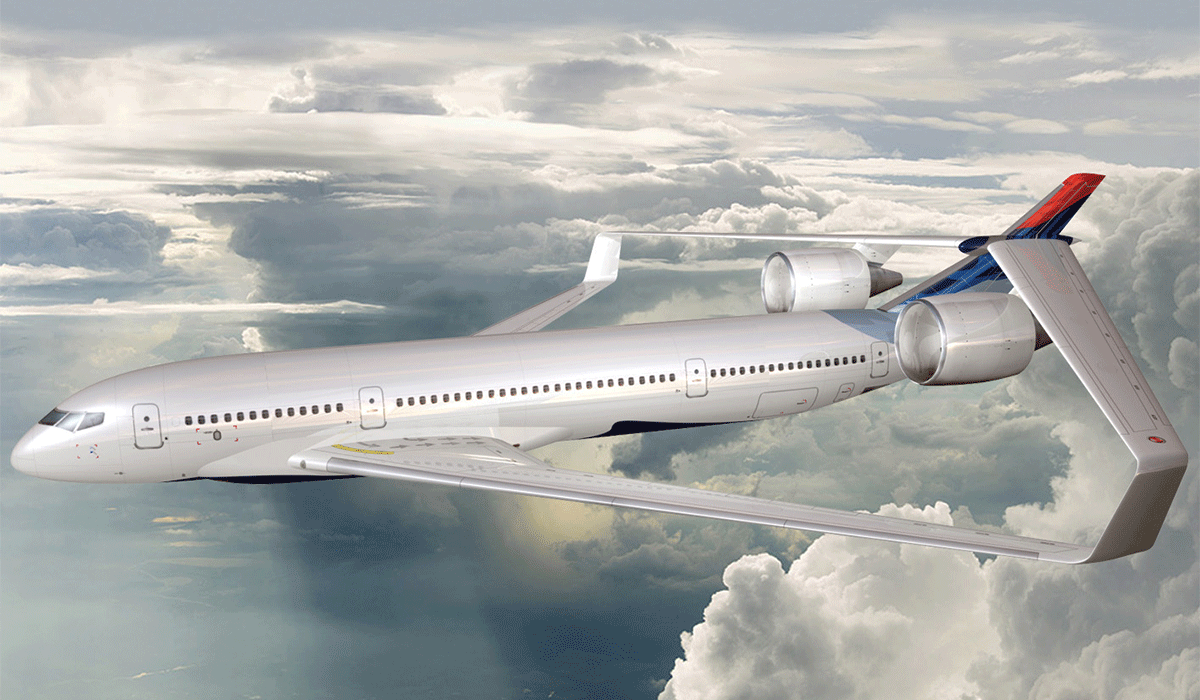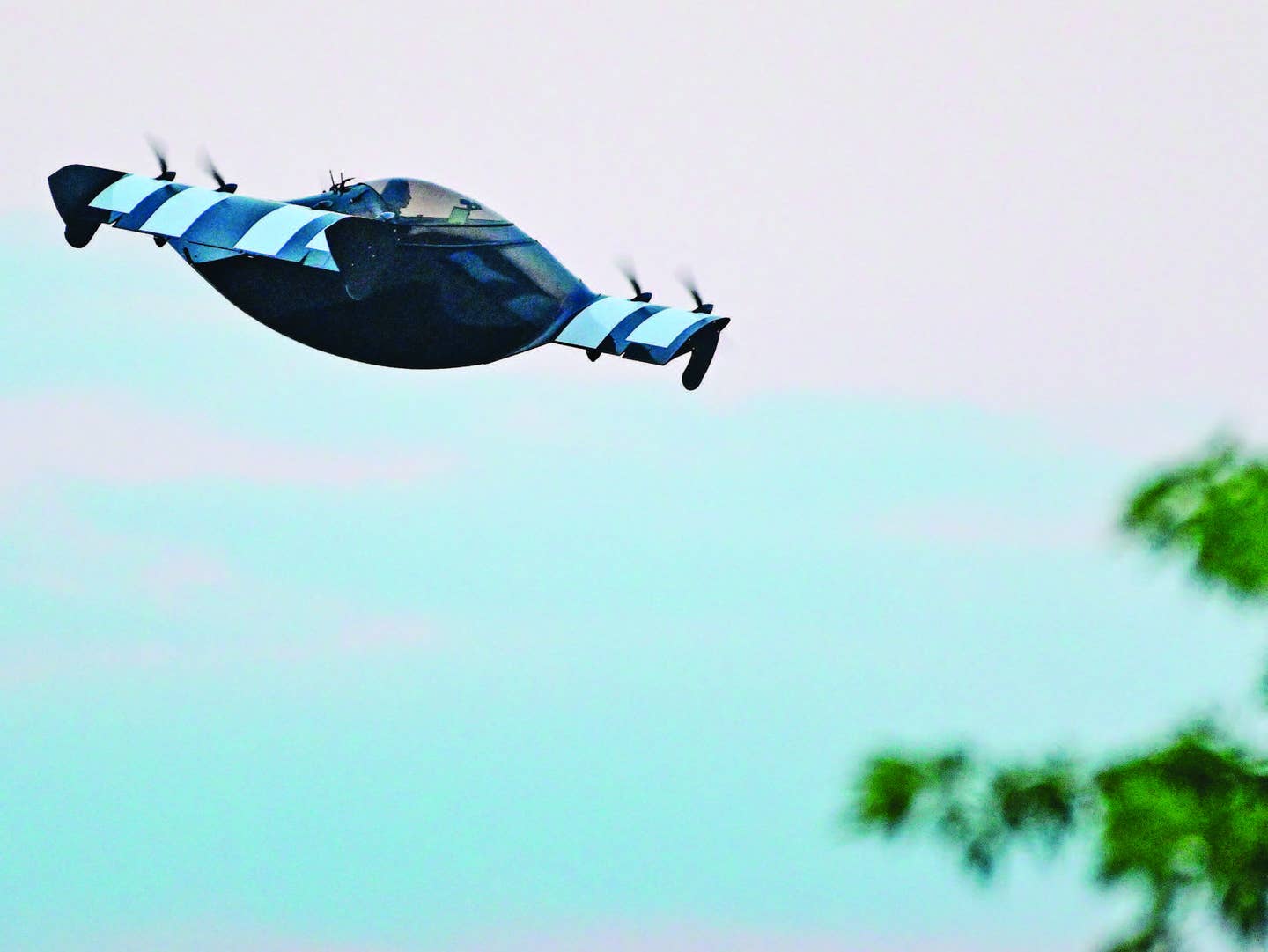
Before he stumbled on what would become the conventional configuration for most airplanes to come, Louis Bleriot tried a closed wing. The idea hasn’t died yet. NASA
In 1909, the French experimenter Louis Bleriot made the first crossing of the English Channel by airplane. The aircraft he used, his Model XI, was similar in its general configuration to what we consider conventional today: engine in front, pilot close behind a monoplane wing, horizontal stabilizer and rudder at the tail end of an extended fuselage. The resemblance to a modern airplane is especially striking in light of the fact that just 11 months earlier Wilbur Wright had demonstrated in France a mastery of flight far beyond anything yet achieved in Europe, and had done so in an airplane entirely different in configuration from Bleriot’s. It must have taken considerable strength of mind to resist copying the Wrights’ design. As history shows, however, Bleriot was right, and the Wrights were wrong.
Undeterred by repeated failures, Bleriot, sometimes in cooperation with various temporary partners, had made a seemingly random series of stabs at what an airplane ought to look like. That his Model XI displayed what we now consider the “correct” configuration was seemingly not so much the result of an evolutionary process as a mere lucky guess.
Bleriot’s Model I was a quaint ornithopter that looked as if it had flapped out of the pages of an 18th-century album of oddities. Model II was a tandem quadriplane on floats. Model III, another floatplane, was also a tandem-wing design, each wing consisting, bizarrely, of a sort of flattened oval duct. Model IV replaced the front oval with flat biplanes while retaining the rear oval, and added canard elevators after the fashion of the Wright Flyer. Model V was a rear-engine canard pusher monoplane whose wings, like those of the later and better-known Etrich Taube, imitated the shape of the gliding Zanonia seed of Java, Indonesia; it was the first of Bleriot’s designs to get off the ground, albeit briefly and with an unhappy return. His Model VI reverted to the scheme of tandem wings, this time monoplanes at either end of its fuselage, carrying the pilot, palanquin-fashion, in the middle.
It was only with his Model VIII that he tried the configuration that eventually led to the Channel-crossing Model XI.
One could, after a few drinks and in the presence of a sufficiently uncritical audience, represent recent efforts to improve upon the efficiency of the time-honored conventional monoplane configuration as an accidental reflection, in reversed chronology, of the history of Bleriot’s experiments. In the 1970s, after many decades of tail-aft monoplanes, we suddenly found ourselves, thanks to Burt Rutan, imagining that the long-neglected canard arrangement had been the right answer all along. Rutan himself, abhorring predictability, drifted from canards to tandem arrangements such as the Quickie, Grizzly and the little-known Model 133 Advanced Technology Tactical Transport. Nicknamed SMUT, which stood for Special Mission Utility Transport, the tandem-wing Model 133 was built, subsequent to the disastrous 1980 attempt to rescue hostages from Iran, to meet a Defense Advanced Research Projects Agency requirement for a fast, long-range STOL airplane for personnel-extraction applications. Like the smaller Grizzly, SMUT solved the canard’s problem of high landing speeds — one limitation of the canard arrangement is that the main wing cannot have very effective high-lift devices — by making the tandem wings similar in size and providing them with extremely large Fowler flaps. With flaps extended, SMUT had nearly as much wing area, relative to its size, as Bleriot’s Model VI.
Plunging still deeper into time’s mirror, we find ourselves at the Bleriot Model II, with its racetrack-shaped — in front view, that is — wings. What Bleriot had in mind, I don’t know. Possibly his protean thinking was influenced by a recent Australian invention: the box kite. Perhaps there was some notion that air, and the elusive lift it contained, could best be corralled by an encircling wing. It’s unlikely that Bleriot had any idea of tip vortices or induced drag, but modern proposals for so-called closed wings, some of which look just like the wings of Bleriot’s unsuccessful Model III, spring from a belief that the way to eliminate the tip vortex is simply to eliminate the tip.
In my opinion — a phrase that may, I know, moot the rest of this sentence — this view is based on a misunderstanding of tip vortices. Tip vortices are, to be sure, associated with lift and with the induced drag it entails, but tip vortex does not, itself, pull the airplane backward. The drag due to lift is exerted over the entire wing, not just the tips, and air is not so easily fooled that eliminating the clear-cut stump at the end of the wing will eliminate what are called “tip losses.” Even a closed wing has ends; it is infinite only in a geometric sense, not an aerodynamic one. Biplanes with closures at the tips, which amount to the same thing as a closed wing, fly no better than the open-ended kind.
If most of the top portion of a closed wing is removed, it becomes a C-wing, with tips that curl back over themselves. These amount to variations upon the basic idea of the winglet, which has become, in addition to a fashion statement, a generally accepted way of reducing lift-related drag. Permutations of winglets, some quite fanciful, have not ceased appearing since their invention by the late NASA aerodynamicist Richard Whitcomb in the early ’70s. A C-wing’s winglets have, you might say, little winglets of their own.
Another recent proposal, akin to both the tandem wing and the hoop wing, is the joined wing, which consists of an aft wing, mounted atop the vertical fin, that sweeps forward and joins the forewing anywhere from midspan to the tip. It’s not clear to me what the aerodynamic merits of this arrangement might be, but it has the structural advantage of bracing the larger wing, as a strut would, and of thereby reducing its weight. The ironic thing about this futuristic-seeming scheme is that it has something in common, both aerodynamically and structurally, with the biplane.
The trick with these purportedly drag-reducing wing shapes is to avoid adding other types of drag — the drag produced by additional surface area or by intersections — that would cancel out their benefits. It may be that there is a Grail (as well as a mixed metaphor) at the end of the long wing-design Chunnel that leads from Bleriot to us. But it may also be that birds had it right all along: A single tapered surface of moderate and essentially horizontal span is still the best way to fly.

Sign-up for newsletters & special offers!
Get the latest FLYING stories & special offers delivered directly to your inbox






